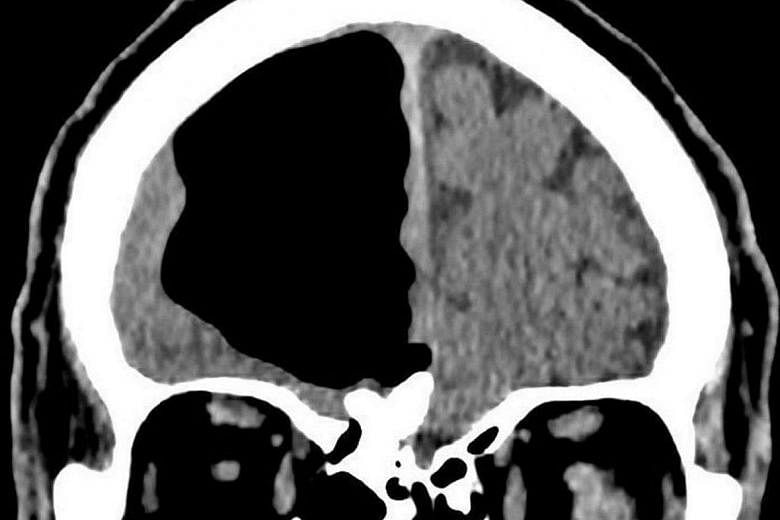The 84-year-old man arrived in the hospital emergency room with complaints that were not uncommon for a patient his age.
He had reported feeling unsteady over the past several months, culminating in repeated falls in recent weeks. In the three days leading up to his hospital visit, his left arm and leg had noticeably weakened.
Still, there were no red flags in the man's medical history. He did not smoke. He rarely drank. A blood test detected nothing abnormal.
"There was no confusion, facial weakness, visual or speech disturbance," doctors stated in a summary of the man's case published on Feb 27 in the medical journal BMJ Case Reports.
"He was otherwise fit and well, independent with physical activities of daily living... and lived at home with his wife and two sons."
In other words, doctors thought, there was nothing apparent that would have suggested a clear reason for his symptoms. In a way, they would not be wrong.
It was only after CT and MRI scans that the man's doctors made an alarming discovery: Where much of the man's right frontal lobe of his brain should have been, there was simply a large blank space.
Dr Finlay Brown, who was working in the emergency department at Causeway Hospital in Coleraine, Northern Ireland, at the time, remembers reviewing the brain-imaging scans with the rest of the staff. "(We) were all very perplexed by the images we saw."
The scans were so extreme, doctors wondered if the man had forgotten to disclose previous brain surgery or birth defects. He said he had not.
It turned out the man had pneumocephalus, or the presence of air in his cranium, a condition that is found in "nearly 100 per cent of cases after brain surgery", Dr Brown said. It can also occur after sinus infections and head or facial injuries - but with pockets of air or gas that are far smaller.
In this case, the patient's pneumatocele - or pressurised air cavity - measured about 9cm at its longest, the BMJ Case Reports article shows.
The pneumatocele's likely cause, an MRI would show, was an osteoma, or benign bone tumour, that had formed in the man's sinus and was eroding through the base of the skull, Dr Brown said.
The tumour's formation and location had allowed for something of a "one-way valve effect" that had contributed to the cranial air cavity. "From speaking to the specialists, it seems it has been progressing insidiously over months to years," Dr Brown said. "When the patient sniffed/sneezed/coughed, he would most likely be pushing small amounts of air into his head."
The air cavity was also reported as a "rare cause" of a small stroke the man had suffered, which had likely led to the left-side weakness and other symptoms that prompted the man's hospital visit, according to the BMJ Case Reports study.
Dr Brown said the patient could have undergone surgeries: One that would decompress the air pocket in his head and another that would eliminate the tumour that had created the "one-way valve" and allowed air to move into the cavity.
But the man declined both. He was given medication to prevent a secondary stroke and sent home with orders to monitor whether his left-side weakness worsened.
So far, though, the man appears to be doing well, despite the cranial air pocket. During a check-up 12 weeks after his hospital visit, the patient reportedly no longer felt weakness on his left side .
Dr Brown stressed "the importance of thorough investigation of even the most common of symptoms", as an octogenarian's frequent falls and imbalance could have easily been written off.
"Because every now and then, there will be a rare (or) unknown causation of these that could be overlooked."
WASHINGTON POST

